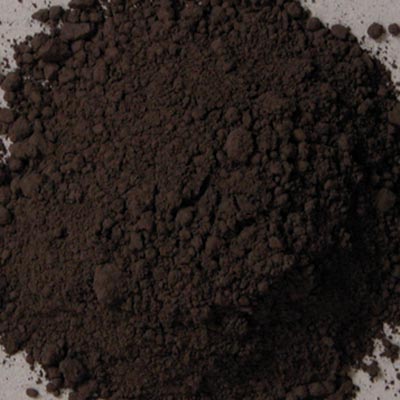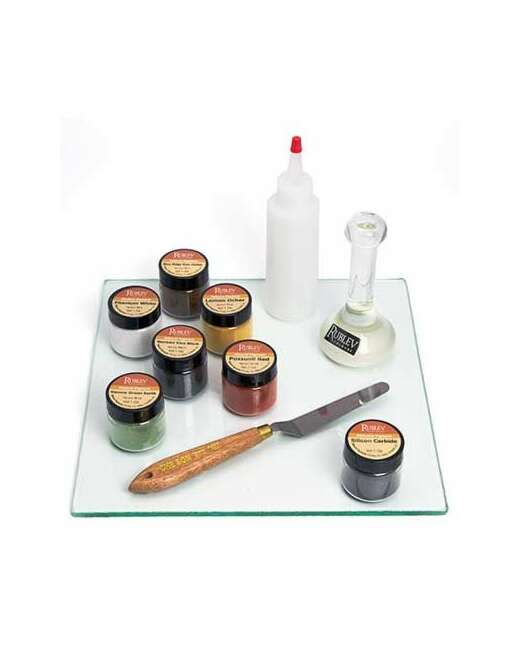Roman Black 4 oz vol
Series 1
A natural brownish-black earth that is a dense, opaque, heavy color that is absolutely permanent. Black earths of Rome and Venice are mentioned by writers, such as De Mayerne. Roman black earth (Terra nera di Roma) is described by Salter as producing ‘the same effect as charcoal black’. It is comparatively warm to neutral in undertone, wets easily, and is non-greasy, when compared to carbon blacks. It is a useful pigment when these qualities are required.
| Pigment Names | |
| Common Names: | English: black oxide French: oxyde noir German: Oxid Schwarzes Italian: ossido nero Japanese: 酸化物黒 Portuguese: óxido preto Spanish: óxido negro |
| Alternate Names: | English: black earth, black ocher, black ochre, black iron oxide, iron oxide French: fer oxydé, naturelle noir Indien Italian: terra nera di Roma Mars black is the name given to the artificial substitute of natural black oxide. |
Origin and History
Black oxide is a recent development in modern pigments and was not often encountered in artists' palettes before the 19th century. However, black earths that are mixtures of iron oxide, manganese oxide and carbon have been in use since Antiquity.
Source
The source of natural black oxide usually is from an iron ore called magnetite. Magnetite, also known as lodestone, is a ferrous ferric oxide (ferrosic oxide) that is a heavy, black color and opaque. Theoretically, black iron oxide contains slightly more iron metal than red oxide but not nearly as much as yellow oxide. The native mineral may contain varying amounts of manganese, sulfur, clay and silica.
Permanence and Compatibility
Natural black oxide is absolutely permanent colors for all uses on the artist's palette. It is compatible with all other pigments, and can be used with good results in all mediums.
Oil Absorption and Grinding
Natural black oxide absorbs a moderately low amount of oil. The oil absorption ratio is 20–25 parts by weight of linseed oil to 100 parts by weight of pigment. If the measurement were grams, it would require 20–25 grams (by weight) of linseed oil to grind 100 grams (by weight) of pigment to form a stiff paste. It makes an average drying oil paint, and forms a hard, fairly flexible film.
Toxicity
Natural black oxide is not considered toxic, but care should be used in handling the dry powder pigment to avoid inhaling the dust.

Rublev Colours Pigment: Roman Black
| Pigment Information | |
| Color: | Black |
| Colour Index: | Pigment Black 11 (77499) |
| Chemical Name: | Iron oxide produced from magnetite ore |
| Chemical Formula: | Fe3O4 |
| ASTM Lightfastness Rating | |
| Acrylic: | I |
| Oil: | I |
| Watercolor: | I |
| Properties | |
| Density: | 5.15 |
| Hardness: | 5.5–6.0 |
| Refractive Index: | n=2.42 |
| SKU | 481-1310 |
|---|---|
| Brand | Rublev Colours |
| Vendor | Rublev Colours |
| Processing Time | Usually ships the next business day. |
| Size | 4 oz vol jar |
| Color | Black |









